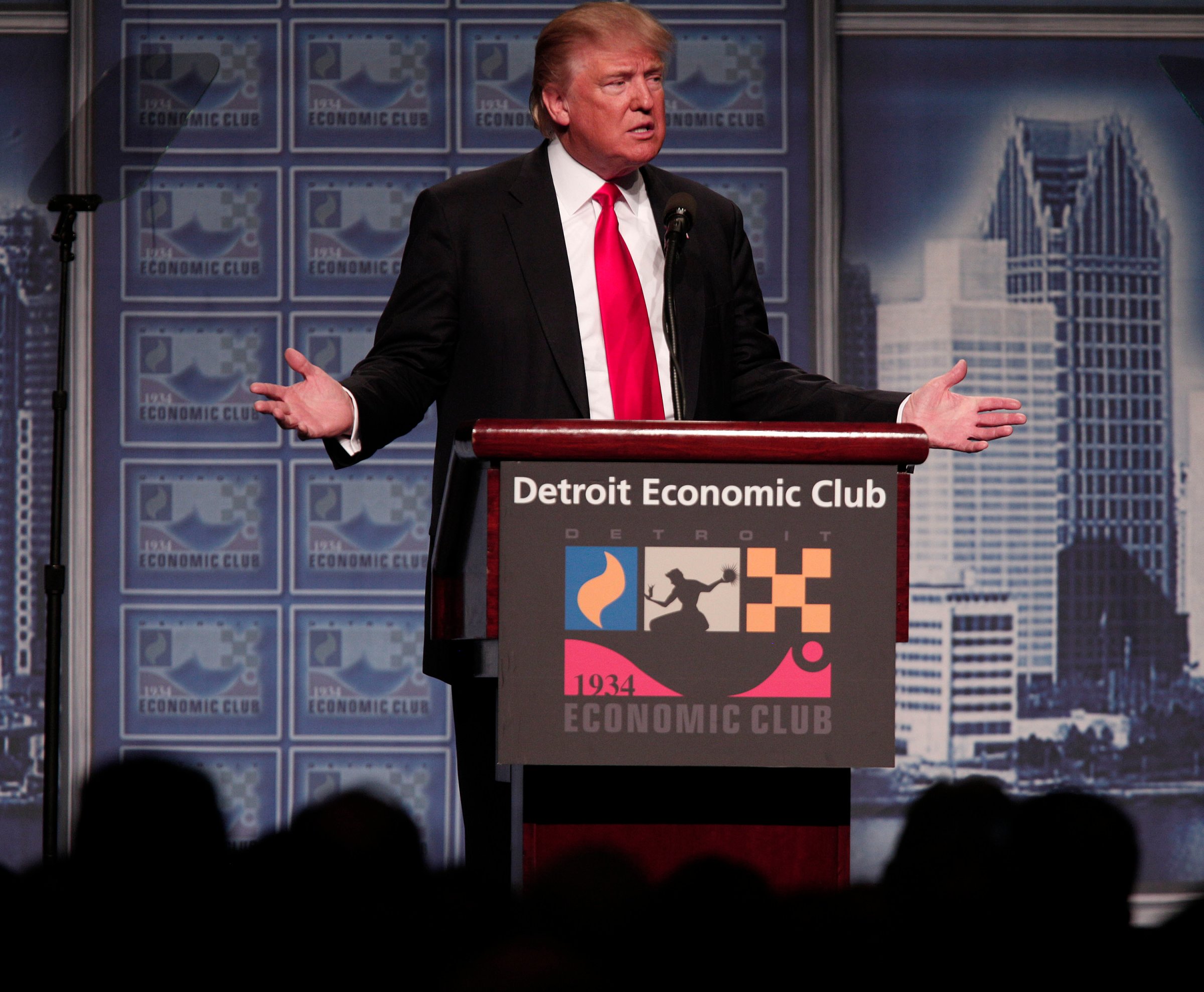
With a big speech to the Detroit Economic Club, Donald Trump has tried to establish his bona fides as a “growth” candidate. There are many desirable features of his new plan, but some of the provisions should be junked, and others can’t be properly assessed given a lack of details.
Here’s what’s good in the plan:
Reducing the overall tax burden: Trump’s original tax plan reduced the tax burden by about $12 trillion over 10 years ($10 trillion after factoring in the impact of faster growth). His new plan doesn’t reduce tax rates by as much as the original plan, and it also includes some changes that generate tax revenue, but the overall effect should still be a reduction in the amount of money being siphoned out of the economy by Washington.
Lower corporate tax rate: The crown jewel of Trump’s plan is a 15% corporate tax rate, dramatically boosting U.S. competitiveness and making America a much more attractive place to do business. Instead of having the highest corporate rate among developed nations, the U.S. rate would rival Ireland’s 12.5% rate.
No “death tax”: Economists don’t like the estate tax because capital must be liquidated to pay a tax that only exists because someone dies. And the tax represents a form of double taxation since the income that generated the assets already was taxed at least one time.
Regulatory moratorium: Trump proposes to block agencies from imposing more red tape on the economy. This would be a welcome change, but the real key to better growth is getting rid of existing regulations that enable cronyism and weaken entrepreneurial activity.
School choice: The U.S. spends more on education, on a per-capita basis, than any other nation yet our results are sub-par at best. Genuine school choice could substantially boost human capital, a key to greater long-run prosperity.
Read more: The ‘Bombshells’ That Could Be in Trump’s Taxes
Here are the bad parts of Trump’s proposal, though they are generally sins of omission:
No plan to restrain overall burden of government spending: It will be very hard to have a tax cut of any size unless Trump also has some sort of plan to limit the growth of government spending. Unfortunately, outside of vague rhetoric about “waste, fraud, and abuse,” it’s unclear that he is serious about the spending side of the fiscal ledger.
No plan to reform poorly designed entitlement programs: Programs such as Social Security, Medicare, Medicaid, and Obamacare are America’s biggest long-run fiscal challenge, especially because of an aging population. Yet Trump says he wants to leave these programs untouched.
Wasteful pork-barrel spending on infrastructure: Trump says he wants to spend twice as much money on infrastructure as Clinton, even though this means taxing money across the nation, carrying it in a leaky bucket to Washington, spilling some of it to finance duplicative bureaucracy, and then carrying it back to the state and local level in another leaky bucket. It’s best to get Washington out of the transportation business.
And we also have the ugly provisions:
Threats of protectionism: It is unclear how serious Trump is about imposing heavy taxes on imports. Derailing new trade agreements would represent a missed opportunity, but wouldn’t be the end of the world. Ripping up existing trade agreements, by contrast, would potentially trigger a trade war and would be a huge risk to global prosperity.
Worldwide taxation: The U.S. is one of the few nations to impose “worldwide taxation” on business income earned overseas, even though that income is already subject to tax in the other nations where it is earned. Fortunately, there is a policy known as deferral that allows companies in some cases to delay this extra layer of taxation. Trump, however, wants to eliminate deferral. The only saving grace is that the damage of this policy will be greatly muted if the corporate tax rate is only 15%.
Higher capital gains taxation on “carried interest”: Trump says that he wants to raise the tax rate on carried interest (the portion of a capital gain that an investor shares with a fund manager). This is largely a symbolic fight, but it’s also the opening salvo of a campaign to raise tax rates on all forms of capital gains.
Tax preference for childcare costs: Allowing higher tax deductions for childcare is a recipe for higher costs, just like subsidies for healthcare and higher education have led to “third-party payer” problems and out-of-control price hikes in those sectors.
Trump also used the speech as an opportunity to criticize Hillary Clinton, stating that her election would mean a continuation of the tax-and-spend policies that have produced very bad results for growth, household income and labor-force participation.
It was an effective indictment though it remains to be seen whether he is viewed as a credible alternative.
More Must-Reads From TIME
- The 100 Most Influential People of 2024
- Coco Gauff Is Playing for Herself Now
- Scenes From Pro-Palestinian Encampments Across U.S. Universities
- 6 Compliments That Land Every Time
- If You're Dating Right Now , You're Brave: Column
- The AI That Could Heal a Divided Internet
- Fallout Is a Brilliant Model for the Future of Video Game Adaptations
- Want Weekly Recs on What to Watch, Read, and More? Sign Up for Worth Your Time
Contact us at letters@time.com